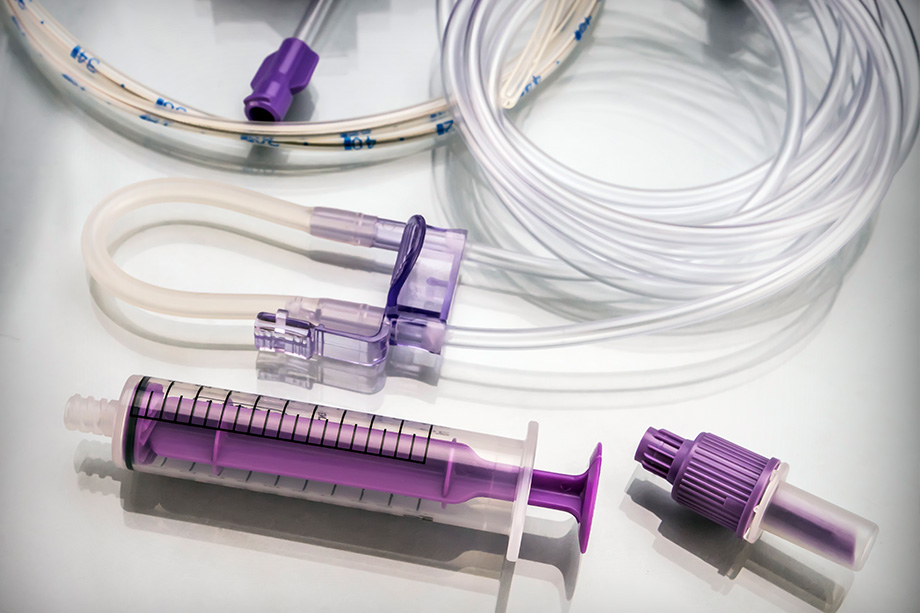CanHOPE is a non-profit cancer counselling and support service provided by Parkway Cancer Centre, Singapore.
Caregiving
Nasogastric Feeding Guidance
What is Nasogastric Tube (NGT) Feeding
A nasogastric tube is a bendable bore tube that is passed into the stomach via the nose. It is used to deliver fluids and feeds into the stomach. Nasogastric tube feeding is done for individuals who are unable to eat or drink by mouth. It can also be started for individuals who are unable to consume enough food/ fluid orally to meet their daily nutritional requirements.
Items required for NGT feeding
- Catheter-tip syringe
- Hypoallergenic tape
- pH indicator test strips
- Measuring cup
- Nutritional supplements (feeds)
- Cooled boiled water
Steps to NGT Feeding
- Wash your hands with soap
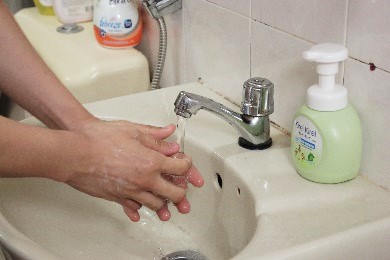
- Prepare required feeding items
- Sit patient up at least 45° or upright

- Check the position of the tube
- Ensure the marking is still at the exit of the nostril
- Check for coiling of tube in the patient’s mouth
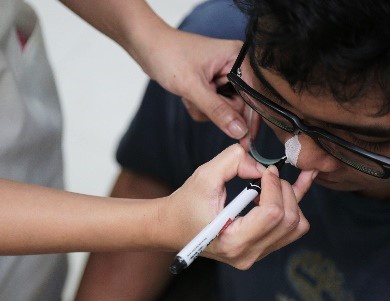
- Kink the tube and connect syringe
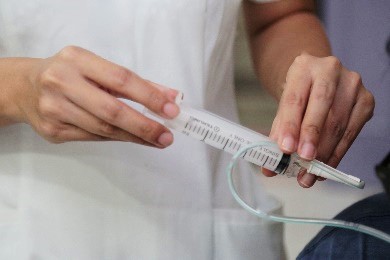
- Withdraw all stomach contents by gently pulling the plunger

- Empty the stomach contents into a cup and dip the pH indicator inside
- Observe that colour changes to confirm tube position
- pH value should be less than 5 (Acidic)
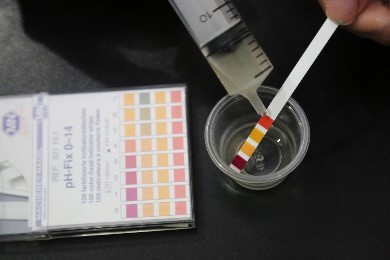
- Start feeding by holding the connected syringe at the level of the patient’s head
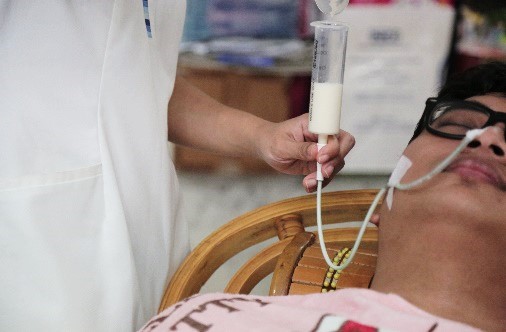
- Pour the recommended feeds into the syringe and allow it to flow passively.
- Ensure that syringe is always filled with fluid to prevent air from entering the stomach
- Observe and Stop feeding immediately if there is coughing, choking or vomiting during feeding
- Seek help from your nurse or healthcare provider

- After feeding, flush tube with the recommended amount of room temperature water
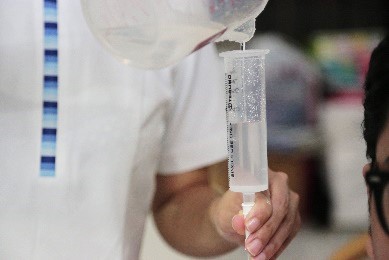
- Disconnect syringe and connect stopper to tube
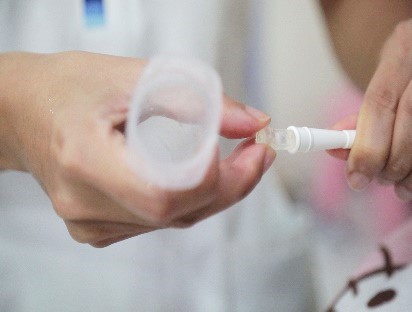
- Maintain patient in the same position for at least an hour
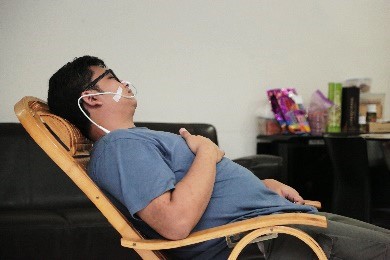
- Wash your hands and reusable items
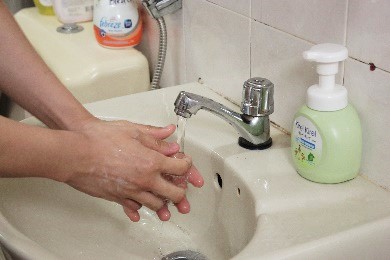
Questions about Nasogastric Tube (NGT) Feeding
- What do I do if the tube slips out?
Contact your healthcare provider and inform them that you need a nurse to re-insert the tube for your loved one as his/her existing tube has slipped out. - My loved one is unable to tolerate sitting up in the recommended position and duration, what should I do?
If your loved one is unable to achieve a seated position of 45-90°, attempt to prop them up using pillows to at least 30° (i.e. a half sitting position). - What can I do to prevent blockage of the NGT?
- Flush the NGT with water after each feed and medication.
- Ensure the medications are pounded as finely as possible before feeding. Alternatively, use liquid medications if available.
- What should I do if pH value is 5 and above? Do I proceed with feeding?
- Do not proceed with feeding if pH value is 5 and above as it may indicate that the tube is not in the stomach
- Recheck the tube placement marking to see if tube has shifted in position.
- If marking is correct, wait for about 30 minutes to an hour and recheck the aspiration pH value. Commence feeding if pH value is less than 5. If it is still above 5, contact your nurse for further assistance.
- There are some factors that can affect stomach pH:
- Continuous feeds
- Delayed stomach emptying
- Certain medications (eg. Losec®, Controloc®, Nexium®)
- If there is ANY doubt about the position of the tubing or the value of the pH (particularly between the range of 5 and 6), do not commence feeding and seek advice from the nurse.





